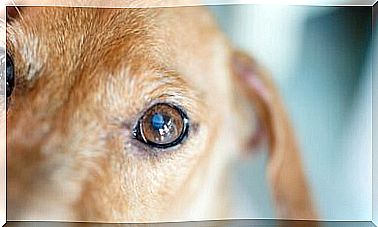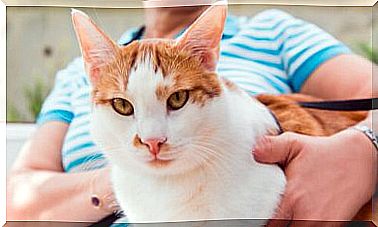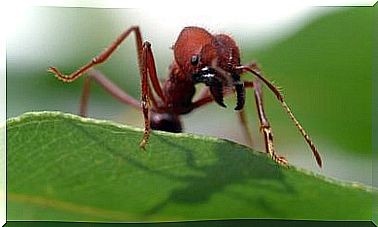Scabies In Domestic Rabbits

There are several causes that trigger scabies in domestic rabbits. In all cases, timely action is essential to preserve your health. In addition to resisting disease well, the rabbit’s instinct tries to hide its injuries from the eyes and smell of predators. Therefore, the disease takes time to become apparent and can spread easily.
Scabies is a very contagious disease, especially if there are more animals living together in the house. A poor diet, a climate prone to the proliferation of pests, or contact with infected animals, may be enough to cause the condition in these small mammals.
Cause and detection of scabies in domestic rabbits
Knowledge of the origin of the disease is essential to prevent and stop contagion. Most often it occurs from contact with an infected rabbit.
Scabies is transmitted by a mite that lodges in the skin ; it is a parasite that can jump from one individual to another, causing rapid contagion.
Female mites burrow into the dermis and open furrows where they lay up to five eggs. Scabies larvae proliferate under the skin, causing severe itching.
Outdoors, males and older larvae infect the environment ; even the wind can be a means of transport for this parasite. Each mite lives an average of three weeks, which is how long the treatment lasts.
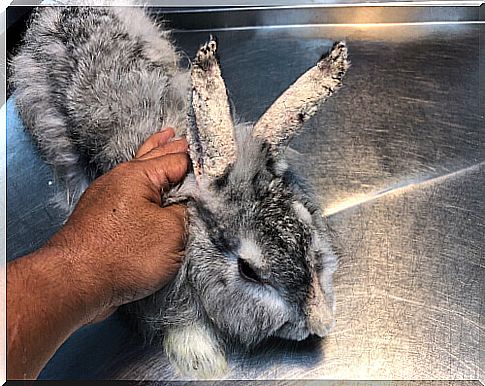
A domestic rabbit infected with these mites will soon show signs of a change in behavior. Lack of appetite is always a sign of illness ; Other symptoms may be deteriorated coat, insulation itself, or itchiness. There are different types of scabies and each variety has its own specific symptoms.
Types of scabies that affect rabbits
- Sacoptic mange is caused by the Sarcoptes scabei mites . It consists of an allergic reaction that generates a whitish or beige tone around the eyes. In the same way, it affects the nose, fingers and mouth, which causes a strong itch in the area. The foul smell is another characteristic of this variety.
- The Trixacarus Caviae is more typical of the burrowing rabbit than the domestic one. One difference from sarcoptic is that it causes a much more intense itch. The rabbit will present, due to continuous scratching, painful wounds and a marked mental deterioration.
- Psoroptic or auricular mange is one in which mites infiltrate the rabbit’s ears. One way to differentiate it is by the wax that begins to build up and by the unpleasant smell.
- Chorioptic mange, caused by Chorioptes cuniculi, also settles on the animal’s ears.
- Notoedres cali mange specifically affects the animal’s head. Scabs and shedding are the most obvious symptoms.
- The Demodex cuniculi is another type of mite that causes mange in domestic rabbits. The uniqueness of this variant is that the furrows of the females penetrate the skin more deeply.
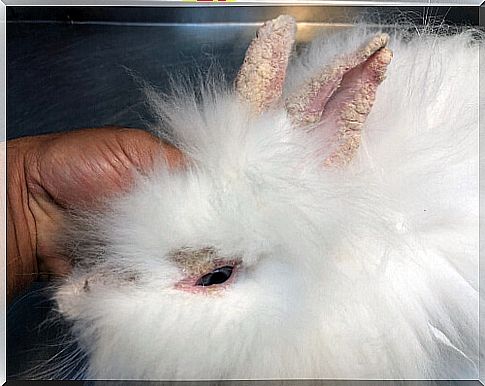
In all cases, the symptoms of scabies recur with greater or lesser intensity. When the itching does not stop, serious infections can occur, including anemia and, in an extreme case, the death of the rabbit.
Treatment and prevention of scabies in rabbits
In the face of any symptom that denotes the presence of the scabies mite in the domestic rabbit, a visit to the veterinarian should be a priority. The professional evaluates not only the type of scabies, but the degree of evolution of it. Sometimes a topical solution is enough, but if there is an infection it is necessary to prescribe antibiotics.
Treatment for scabies in rabbits is usually similar to that of cats and dogs, for which there are different very effective substances. Ivermectin is a drug often used to cure scabies.
This medication can be injectable or orally administered ; It is applied every 15 days and three applications are usually sufficient. Also, moxidectin and selamectin are often used to fight scabies; for wounds, the most common is benzyl benzoate.
Disinfecting the house is essential for the treatment to be effective. It is important to clean the blankets and fabrics that have been in contact with the rabbit with hot water.
If the animal is prone to scabies, it should be bathed frequently with antiparasitic solutions. A good balanced diet also helps to strengthen the skin and avoid colonies of mites on the animal.
